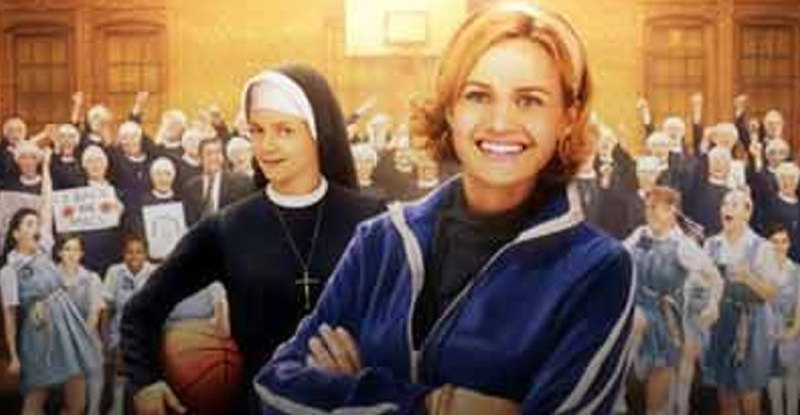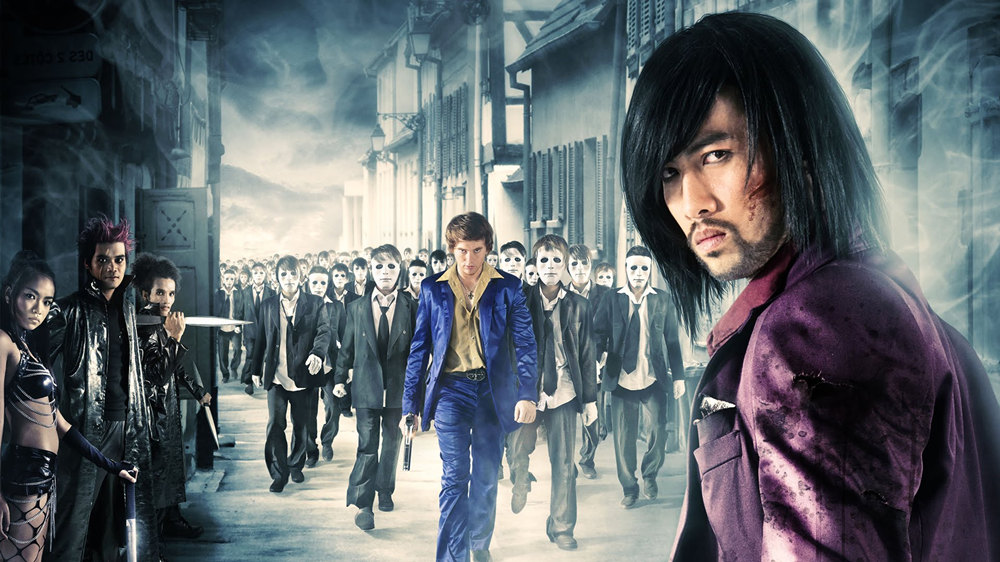Film may be the ultimate mausoleum, preserving our celluloid heroes as fixed memories for generations, but Hollywood has seldom valued its history unless it’s bankable. Who has time for yesterday unless it provides another pre-existing property from the library that can be rebooted for a audience of cultural amnesiacs?
Robert Boyle was once eminently bankable. The legendary production designer got his first big break on Hitchcock’s “Saboteur” (1942) and in a career that spanned five decades he also padded his resume with films such as “North by Northwest” (1959 – that Mt. Rushmore scene was his baby), “Cape Fear” (1962) and “In Cold Blood” (1967). Boyle’s film career ended with the mysteriously overlooked 1989 masterwork “Troop Beverly Hills” but Boyle was just setting the stage for a happy and very long retirement. Indeed when documentarian Daniel Raim interviews Boyle in 2007 at the age of 97, he tells the multiple Oscar nominee: “You span three quarters of the history of film!” Which is an achievement you probably can’t match unless your name is Manoel de Oliveira.
For a man only slightly younger than 35mm film, Robert Boyle is still pretty spry as the energetic and engaging protagonist of “Something’s Gonna Live,” but he’s not the only star of the film. Boyle broke in at Paramount in the 1930s where he befriended two other men who also played a major role in Hollywood cinema. Albert Nozaki’s most famous contribution to popular culture may be the Martian war machines of “War of the Worlds” (1952) but he also had a hand in films such as “The Ten Commandments” (1956) and the Bob Hope vehicle “Casanova’s Big Night” (1954) before he was forced to retired in 1969 thanks to deteriorating eyesight. Yes, that’s right, an Oscar nominated art director who was almost functionally blind from the get go. The Japanese-American (brought to America by his parents at the age of three) was also fired by Paramount just hours after Pearl Harbor was bombed; hooray for Hollywood! The third amigo is Henry “The Kid” Bumstead who won Oscars for Art Direction on “To Kill a Mockingbird” (1962) and “The Sting” (1973).
Raim filmed his subjects over the greater part of the past decade and the documentary dances back and forth in time from around 2002 to 2009 (forgive me if I’m off by a year as it’s not always clear). In some of the film’s best footage, the three men visit the Paramount lot sometime around 2003, each requiring varying degrees of assistance to take the tour, but all razor sharp in their reminiscences. Raim also films Boyle and Bumstead, both of whom worked extensively with Hitchcock, at a later date as they revisit modern day Bodega Bay, and Boyle thinks back to what the area looked like when he served as art director on “The Birds.”
These Hollywood titans are not only too old to work in the industry, they’re too old to even count as part of Hollywood’s ever-younger demographic, so they truly function as outsiders now. This only makes their observations on the state of the business that much keener. Boyle is the most outspoken, but they all agree that Hollywood’s increasing reliance on computers all but eliminates two of the most creative aspects of film production: serendipity and necessity. Without messy practical limitations, modern filmmakers can do just about whatever they want to, and that’s the problem: “It’s so sophisticated it just doesn’t mean anything… The imperfections were part of the film process.” A film benefits from someone to “spoil” the project and make it feel human, rather than sleek, frictionless, and dead on arrival. Perhaps they underestimate the problems that crop up on a digital “shoot” but the point is difficult to argue.
The industry vets aren’t here just to kvetch, however, nor do they romanticize the good old days. But their collective wisdom is invaluable, as is Raim’s effort to spotlight and preserve their contributions and their personalities (we also meet a couple of their friends and former co-workers, including cinematographer Conrad Hall and filmmaker Haskell Wexler.) The documentary’s title comes from a quote by Boyle who believes that “something’s gonna live” from his work, by which he really means “outlive” and he’s already been proven right. Boyle passed away in 2010 at the age of 100, two years after receiving an honorary Oscar for lifetime achievement.
OK, so I was being unfair, Hollywood reserves several minutes out of every year to commemorate its past. Fortunately filmmakers like Daniel Raim are here to fill out the rest of the schedule.
Video:
The film is presented in a 1.78:1 anamorphic transfer. The interlaced transfer is standard fare, with a consistently solid image quality in all the contemporary material shot by Raim. The film also includes archival footage (mostly still photos) which, of course, varies in quality.
Audio:
The DVD is presented in Dolby Digital stereo. All dialogue is clearly recorded and the audio design is otherwise fairly straightforward. No subtitles are provided.
Extras:
The DVD is surprisingly loaded with bonus material.
Raim had already shot a film spotlighting Robert Boyle’s work. His 2001 Oscar-nominated documentary short “The Man On Lincoln’s Nose” (40 min.) is included here as an extra with several Bonus Scenes also included along with a review by Andrew Horton originally published in “Cineaste” in 2001.
We also get a 23-minute video from an American Film Institute Master Class in which Boyle presents his Production Design Checklist.
Two of the notable guest stars in the film also get extras. Conrad Hall discusses life after film school (6 min.) in a video conversation with Boyle, and we get an audio recording of Haskell Wexler discussing the documentary on a radio program on KPFK (20 min. – Oct 6, 2010).
The disc also includes Nine Deleted Scenes (16 min. total) along with a Trailer and Featured Artist Bios (text-based).
Film Value:
Boyle, Nozaki, and Bumstead have all passed away now, but this vital documentary brings them to audiences “like new.” These grey eminences may have retired long before Raim trained his camera on them, but their story is the story of Hollywood in a far more relevant manner than any contemporary account of one of the studio’s empty suits currently mass producing CGI pabulum for adolescents of all ages. “Something’s gonna live” from their work long after “Hangover of the Titans” has been relegated to the dustbin.


